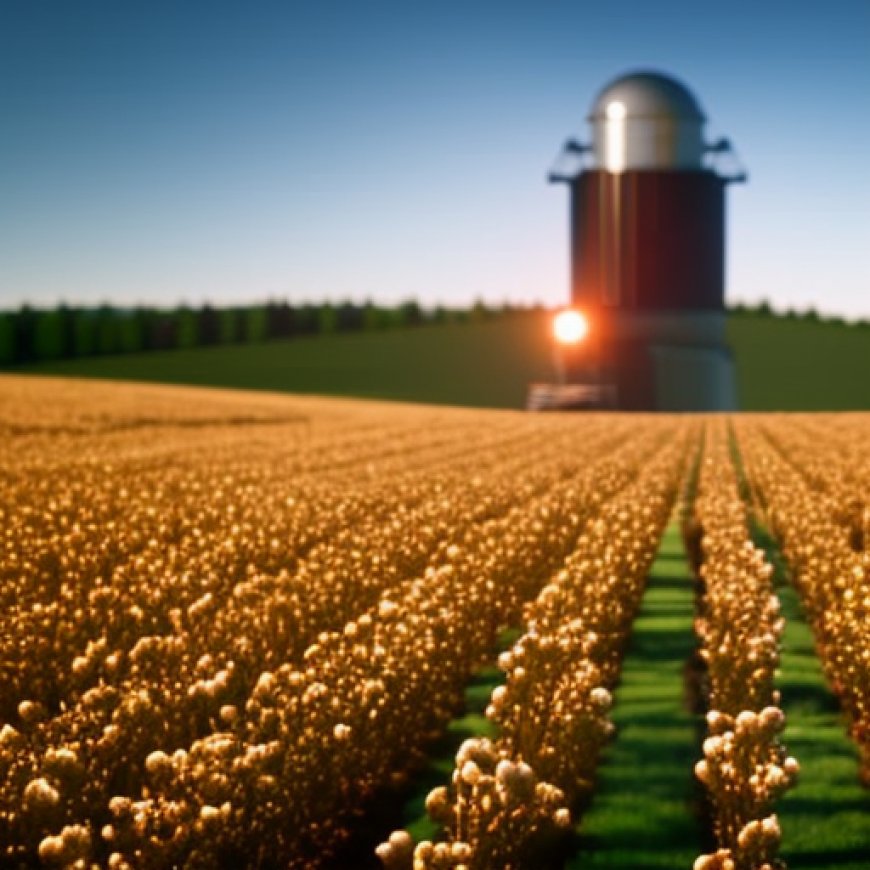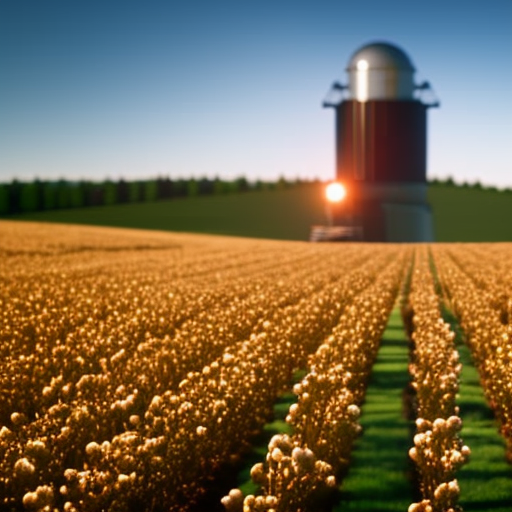Rushed CAP changes are not about farmers, but agro-industry profits
Rushed CAP changes are not about farmers, but agro-industry profits Euronews


The Rushed Reopening of the Common Agricultural Policy
The opinions expressed in this article are those of the author and do not represent in any way the editorial position of Euronews.
The rushed and quirky bureaucratic manoeuvre of reopening the Common Agricultural Policy runs counter to the interests of farmers, consumers, and our environment, and only serves to deliver profits for the big agri players promoting it, Natacha Cingotti writes.
Introduction
On several mornings this spring, Brussels’ European Quarter woke up to the sound of giant tractors honking loudly, with tonnes of soil and manure dumped around street corners, and bonfires blocking important crossroads.
It wasn’t exactly the cosy atmosphere that European bureaucrats are used to.
This spectacular roadshow was set up by farmers representing small and big farms across Europe to highlight their everyday struggles to make a decent living from their almost 24/7 work shifts to produce our food.
Unfortunately, in no time, their legitimate demands for fair incomes got heavily instrumentalised by the big agro-industry players.
Indeed, for those keen on putting the last nail in the coffin of the EU Green Deal agenda, the impressive protests came at just the right time to justify a rushed re-opening of the Common Agriculture Policy (CAP) and suggest removing the few environmental safeguards of the farmers’ subsidies payment system instead of addressing its deeply rooted loopholes.
What happened, President von der Leyen?
On 15 March, the European Commission put forward a new legislative proposal with targeted amendments to simplify existing procedures and, most worryingly, to undo the environmental conditionalities that are currently in place for the receipt of EU farm subsidies — the so-called good agriculture and environmental conditions or GAECs.
Within weeks, the proposal got rubberstamped by national capitals and proposed for emergency voting in the European Parliament, conveniently bypassing the committee in charge of environmental matters.
The amendments have now been added to the agenda of the last plenary meeting of this Parliament’s term on 22-25 April.
At this stage, maybe you are — like me — confused. After all, the CAP is one of the chunkiest pieces of EU laws and weighs heavy on the union’s budget: €387 billion in total for the period 2021-2027.
The details about how this money is to be awarded are renegotiated every few years, a lengthy and administratively intensive process, involving numerous stakeholders.
Rightly so, considering the high stakes for the entire food system and society.
So how can this careful compromise now be reopened in the space of weeks, without impact assessment, nor meaningful societal debate — and also, it now turns out, without comprehensive parliamentary scrutiny?
We’re witnessing immense corporate pushback
What is unfolding under our eyes is one of the most successful corporate-pushed attacks against the few remaining environmental safeguards of our Common Agricultural Policy, dangerously circumventing usual decision-making processes to sign off permanent legal changes that will only benefit short-term profits of big industry players.
The current CAP already encourages an agricultural system in which large-scale industrial producers receive higher amounts of money, leading to the concentration of the agricultural landscape, locking farmers into reliance on toxic intrants (e.g. fertilisers, synthetic pesticides).
Still, farmers have to respect a minimal set of environmental standards in order to receive EU subsidies. The GAECs apply to close to 90% of the utilised agricultural area in the EU and play an important role in mainstreaming sustainable farming practices.
The proposed CAP alterations take us backwards and run counter to the environmental and climate emergencies we face, the EU’s own commitments under the Green Deal, and importantly, farmers’ demands for fair incomes in the long run.
Farmers’ organisations representing smallholders such as Via Campesina have repeatedly alerted on the vital role of measures that enable the environmental transition of our farming system for the long-term survival of farmers, but they have been ignored due to the successful scaremongering of agro-industry players about environmental measures.
Losing credibility and hurting society’s long-term interests
The European Commission, national capitals and some of the sitting MEPs have already lost credibility towards citizens after giving in to corporate pressure on major EU Green Deal files, abandoning the regulation on the sustainable use of pesticides (SUR), the nature restoration laws, or the animal welfare reform package.
As we approach the European elections, another step backwards on the CAP would send a terrible public signal.
Besides the short-term profits of big agri players, it is more than troubling that this reform will be detrimental to the rest of society’s long-term interests: a fair livelihood for farmers, thriving ecosystems that allow growing healthy food, human health, and long-term economic gains for the food sector at large.
Natacha Cingotti is Senior Campaigns Strategist at foodwatch international. At Euronews, we believe all views matter.
Contact us at view@euronews.com to send pitches or submissions and be part of the conversation.
SDGs, Targets, and Indicators
-
SDGs Addressed or Connected to the Issues Highlighted in the Article
- SDG 2: Zero Hunger
- SDG 12: Responsible Consumption and Production
- SDG 13: Climate Action
- SDG 15: Life on Land
-
Specific Targets Under the SDGs Based on the Article’s Content
- SDG 2.4: By 2030, ensure sustainable food production systems and implement resilient agricultural practices that increase productivity and production, that help maintain ecosystems, that strengthen capacity for adaptation to climate change, extreme weather, drought, flooding, and other disasters, and that progressively improve land and soil quality.
- SDG 12.3: By 2030, halve per capita global food waste at the retail and consumer levels and reduce food losses along production and supply chains, including post-harvest losses.
- SDG 13.2: Integrate climate change measures into national policies, strategies, and planning.
- SDG 15.1: By 2020, ensure the conservation, restoration, and sustainable use of terrestrial and inland freshwater ecosystems and their services, in particular forests, wetlands, mountains, and drylands, in line with obligations under international agreements.
-
Indicators Mentioned or Implied in the Article to Measure Progress towards the Identified Targets
- Indicator 2.4.1: Proportion of agricultural area under productive and sustainable agriculture
- Indicator 12.3.1: Global food loss index
- Indicator 13.2.1: Number of countries that have communicated the establishment or operationalization of an integrated policy/strategy/plan which increases their ability to adapt to the adverse impacts of climate change
- Indicator 15.1.1: Forest area as a proportion of total land area
Table: SDGs, Targets, and Indicators
| SDGs | Targets | Indicators |
|---|---|---|
| SDG 2: Zero Hunger | Target 2.4: By 2030, ensure sustainable food production systems and implement resilient agricultural practices that increase productivity and production, that help maintain ecosystems, that strengthen capacity for adaptation to climate change, extreme weather, drought, flooding, and other disasters, and that progressively improve land and soil quality. | Indicator 2.4.1: Proportion of agricultural area under productive and sustainable agriculture |
| SDG 12: Responsible Consumption and Production | Target 12.3: By 2030, halve per capita global food waste at the retail and consumer levels and reduce food losses along production and supply chains, including post-harvest losses. | Indicator 12.3.1: Global food loss index |
| SDG 13: Climate Action | Target 13.2: Integrate climate change measures into national policies, strategies, and planning. | Indicator 13.2.1: Number of countries that have communicated the establishment or operationalization of an integrated policy/strategy/plan which increases their ability to adapt to the adverse impacts of climate change |
| SDG 15: Life on Land | Target 15.1: By 2020, ensure the conservation, restoration, and sustainable use of terrestrial and inland freshwater ecosystems and their services, in particular forests, wetlands, mountains, and drylands, in line with obligations under international agreements. | Indicator 15.1.1: Forest area as a proportion of total land area |
Note: The specific information from the article has been used to identify the relevant SDGs, targets, and indicators.
Behold! This splendid article springs forth from the wellspring of knowledge, shaped by a wondrous proprietary AI technology that delved into a vast ocean of data, illuminating the path towards the Sustainable Development Goals. Remember that all rights are reserved by SDG Investors LLC, empowering us to champion progress together.
Source: euronews.com

Join us, as fellow seekers of change, on a transformative journey at https://sdgtalks.ai/welcome, where you can become a member and actively contribute to shaping a brighter future.







